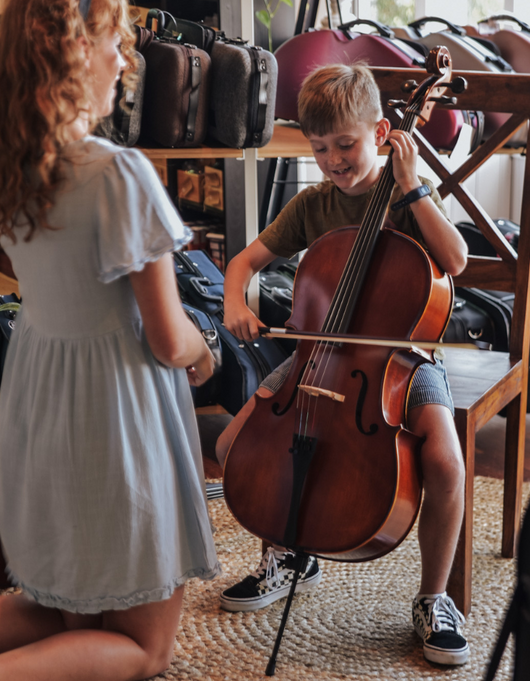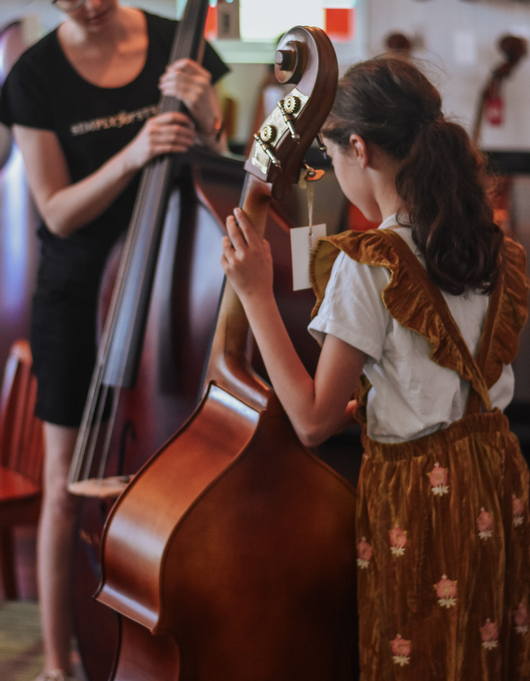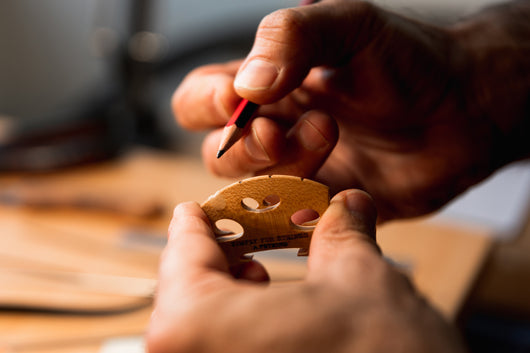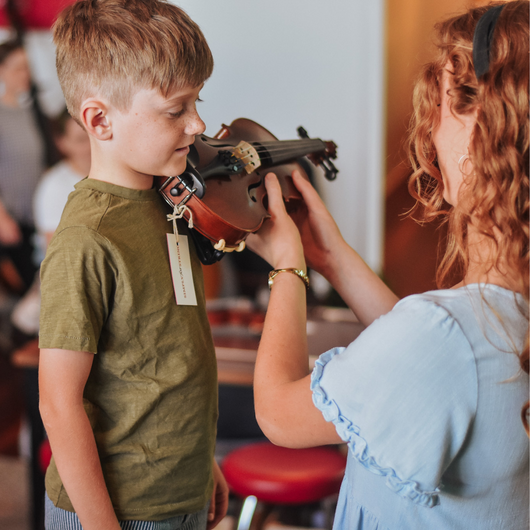Wanting to boost your productivity and optimise your practise sessions? If you haven’t already invested in a metronome, read our post to see why you should practise with a metronome.
One thing teachers often recommend purchasing at the beginning of your musical journey is a metronome. Often, during the initial stages of learning to practise with a metronome, students can feel overwhelmed and may avoid practising with one altogether. Learning how to keep time and play rhythms correctly are important skills musicians develop over time. This is where metronomes come in! There are lots of benefits to using a metronome and they will transform how you approach practising forever.
What is a Metronome?
A metronome will help you learn (and improve!) your rhythm. A metronome generates a steady click at a regular interval of time, so you know exactly where the beat is in each bar. Analog, electronic or digital varieties are available in all good music stores. A metronome will ensure you pay attention to rhythm and time in every single bar you play. A metronome helps players, whether they are beginners or professionals, keep a consistent tempo, so you don’t slow down or speed up.
Shop our wide range of Metronomes.
What does a metronome help with?
Rhythm, timing, simplifying challenging sections, it helps you stay in time in orchestra and ensembles, helps you track your progression and much more!
How Do I Use a Metronome?
Find your time signature in your sheet music. It will be right next to the key signature at the beginning of the piece, or next to the bar lines if it changes through your music. The top number tells you how many beats are in one single bar, while the bottom number is the note value that is one beat. Some common time signatures you’ll see in your sheet music are 4/4, 3/4 and 7/8. The composer might give you a tempo marking at the top of the sheet music, such as beats per minute equals 70. Make a note of this number, as eventually you’ll want to get your metronome to this speed.
Select a tempo on your metronome. It doesn’t have to be the tempo (beats per minute) that the composer says straight away - a slower tempo is a great way to work through complicated rhythms and lots of notes. When first learning a piece, or developing certain sections, optimise your practise by selecting a short section to work on. Selecting a short section (8-16 bars) that you want to work on ensures you stay focused and not overwhelmed by the entire piece.
Select a volume - you don’t want the metronome to blast you out of the room, but you need to be able to hear it over your instrument. A Wittner Metronome can help if you also want a visual aid of where the beat is.
"On breaking up the piece into short segments I can carefully address particular technical challenges, such as intonation and coordination, without trying to be particularly musical. This might include practising in rhythms, trying different bowings, very slow practise and so on. When I try to go through the piece and bring it up to tempo, I record myself and put tick-marks by the spots that are still not perfect. When I start my next session I go to those particular spots, and when I feel completely secure I erase the ticks. When there are no more ticks I feel pretty good.
Almita Vamos, The Strad, July 2015"
How to Practise with a Metronome?
As we mentioned above, slower is better! If you’re new to using a metronome, a slow and steady pulse when practising scales or studies can be a good way to help integrate a metronome into your practise sessions. Clapping or tapping the rhythm of the piece along with the metronome before starting to add notes can help too. When practising anything to begin with, slow it down enough so that you’re able to play everything correctly (no wrong notes, no out-of-tune notes, no wrong bowing etc). Remember, you don’t have to use a metronome for your entire practise session. Using it for short bursts is still effective.
We recommend working in time blocks - set your metronome to 60 beats per minute as an example, for a 15-20 minute time block, before increasing the speed. This will ensure you understand the rhythm and notes in the section of the piece you’re working on. If you’re feeling comfortable with the rhythm and notes in that section, up the tempo to 70 beats per minute, or whatever suits the piece you’re working on best. Repeat this process a couple of times in a practise session before you move onto a different section or piece. Additionally, gradually increasing the tempo across different practise sessions will help you retain what you’ve learnt better.
- Set the metronome to the tempo at which you think you can play the passage
- Begin playing
- Stop when you make a mistake - even a small one - and set the metronome 5-10bpm slower
Shelly Trampoosh, The Strad, October 2011”
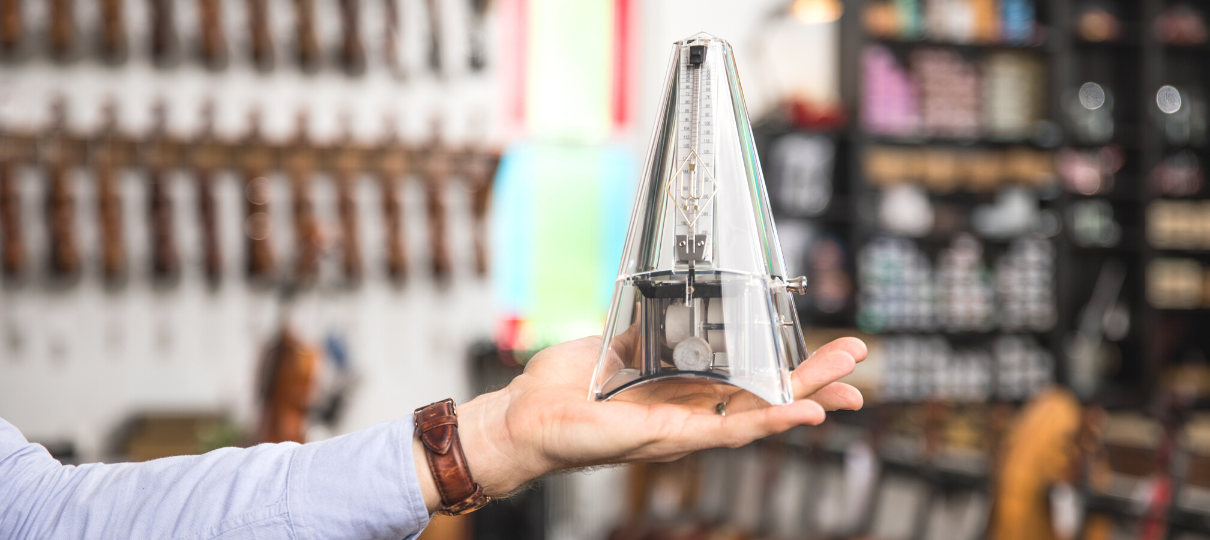
Our Favourite Metronomes
We stock a wide variety of metronomes from leading brands including Korg, Intelli and Wittner. Here are some of our favourites!
New arrival: BEAM Clip-on Metro/Tuner. The BEAM tuner brings exciting value and functionality to the market. Chromatic tuner and Metronome all-in-one, double swivel joints for maximum adjustment, and a magnetic detachable top means you can set it up like a metronome on a table top or music stand. The BEAM tuner is also completely rechargeable so you'll never need to buy replacement batteries again!
Easy to use: KORG TM-60 Digital Tuner/Metronome. If you're looking for a reliable metronome/tuner combo that is easy to use, the KORG is a great option. The tuner and metronome can be used simultaneously or independently so you can practice your pitch and rhythm at the same time.
Sleek and classic: Wittner Metronomes. If you're after a gorgeous classic style metronome, we offer a wide range of Wittner metronomes in different wooden finishes to suit your studio. The Wittner Maelzel range of metronomes are traditional style pyramid metronomes. They feature a wooden case with a woodgrain finish to match with your piano or the decor of a musicroom. These German made metronomes have a clockwork mechanism with a swinging pendulum and a bell sound which can be added to the clicking rhythm and made strike on the 2nd, 3rd, 4th or 6th beat.
We hope this post has helped you see that metronomes don’t have to be scary! They are a very useful tool for your entire musical journey. If you've got any questions, book an appointment to speak to our team today, or drop in-store to see us at 78 Enoggera Terrace. We look forward to helping you soon!





